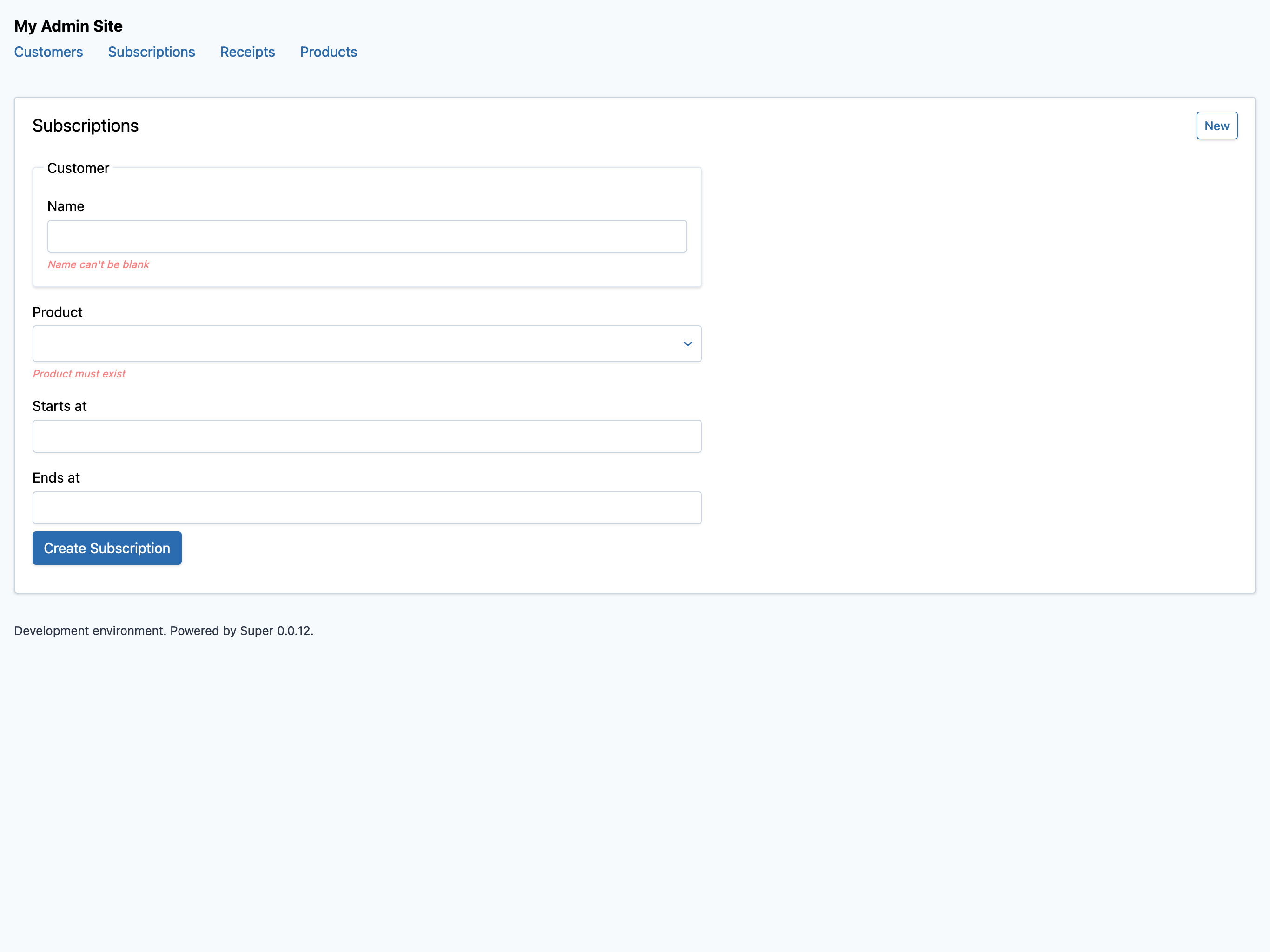Customizing your admin pages
Customers
We won’t make any customizations in the admin page, but let’s add a validation to the Customer model.
# app/models/customer.rb
class Customer < ApplicationRecord
validates :name, presence: true
end
Products
Let’s format the prices, and on the show page, let’s add the number of current subscriptions.
# In app/models/product.rb
class Product < ApplicationRecord
has_many :subscriptions
monetize :price_cents # this is a feature of rails-money
end
The interesting thing to keep in mind here are the calls to type.computed. The call to computed tells Super that you’re defining a field that isn’t a column. The first argument, :column yields the value of that field/method, while :record yields the entire record. The value of the block is what is shown to the user.
The call to type.string might seem a little incorrect, but you can think of it like calling #to_s on the field to get it ready for display.
# In app/controllers/admin/products_controller.rb
class Admin::ProductsController < AdminController
class Controls < AdminControls
def model
Product
end
def display_schema(action:)
Super::Display.new do |f, type|
f[:id] = type.string
f[:name] = type.string
f[:price] = type.computed(:column, &:format)
if action.show?
time = Time.current
f[:current_subscriptions] = type.computed(:record) do |record|
record.subscriptions.where("starts_at < ? AND ends_at > ?", time, time).size
end
f[:created_at] = type.timestamp
f[:updated_at] = type.timestamp
end
end
end
end
end
Note that this doesn’t change the filtering or sorting sections. That’s customizable too, but we’ll get to that later.
The index view:
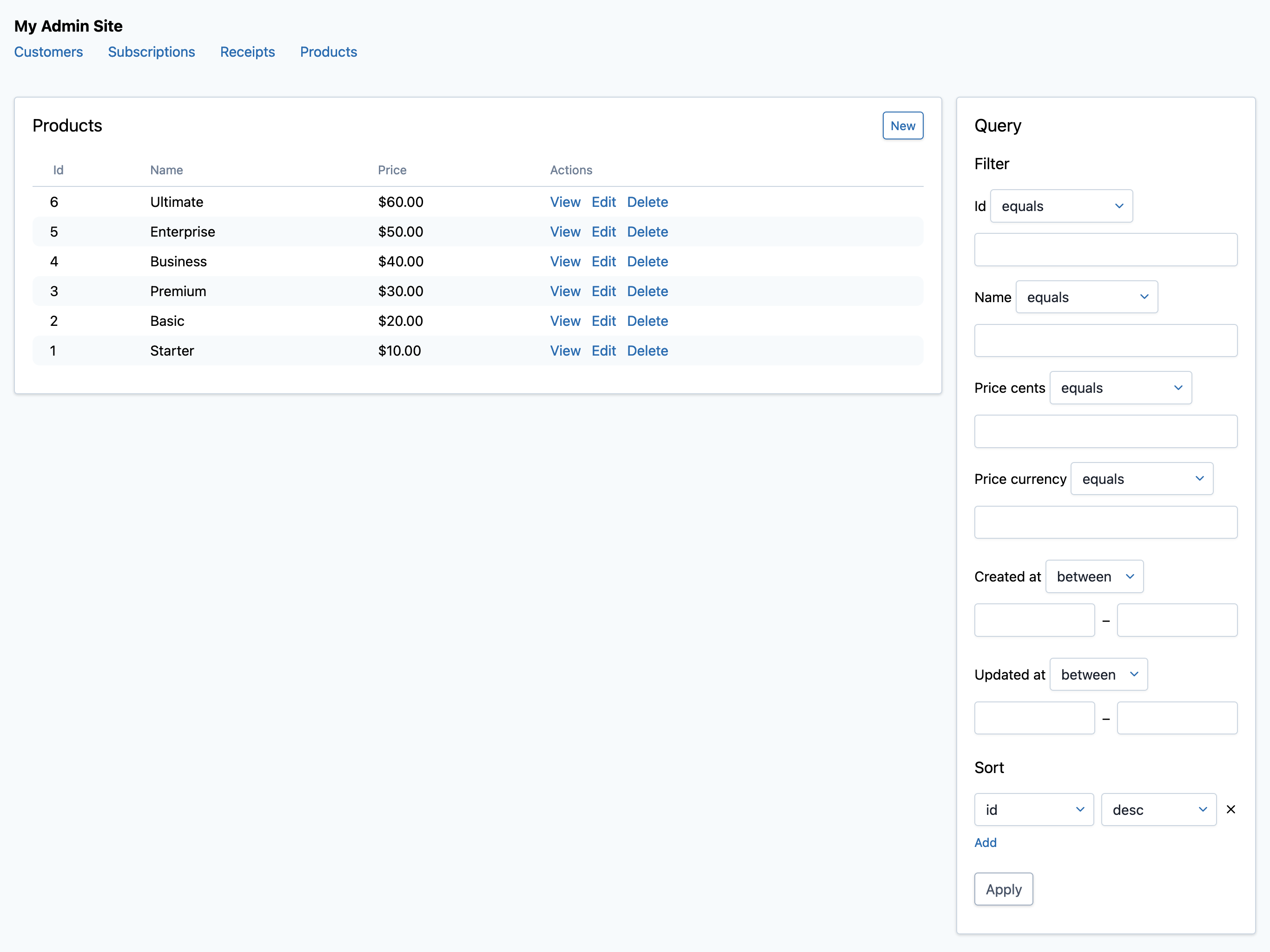
The show view:
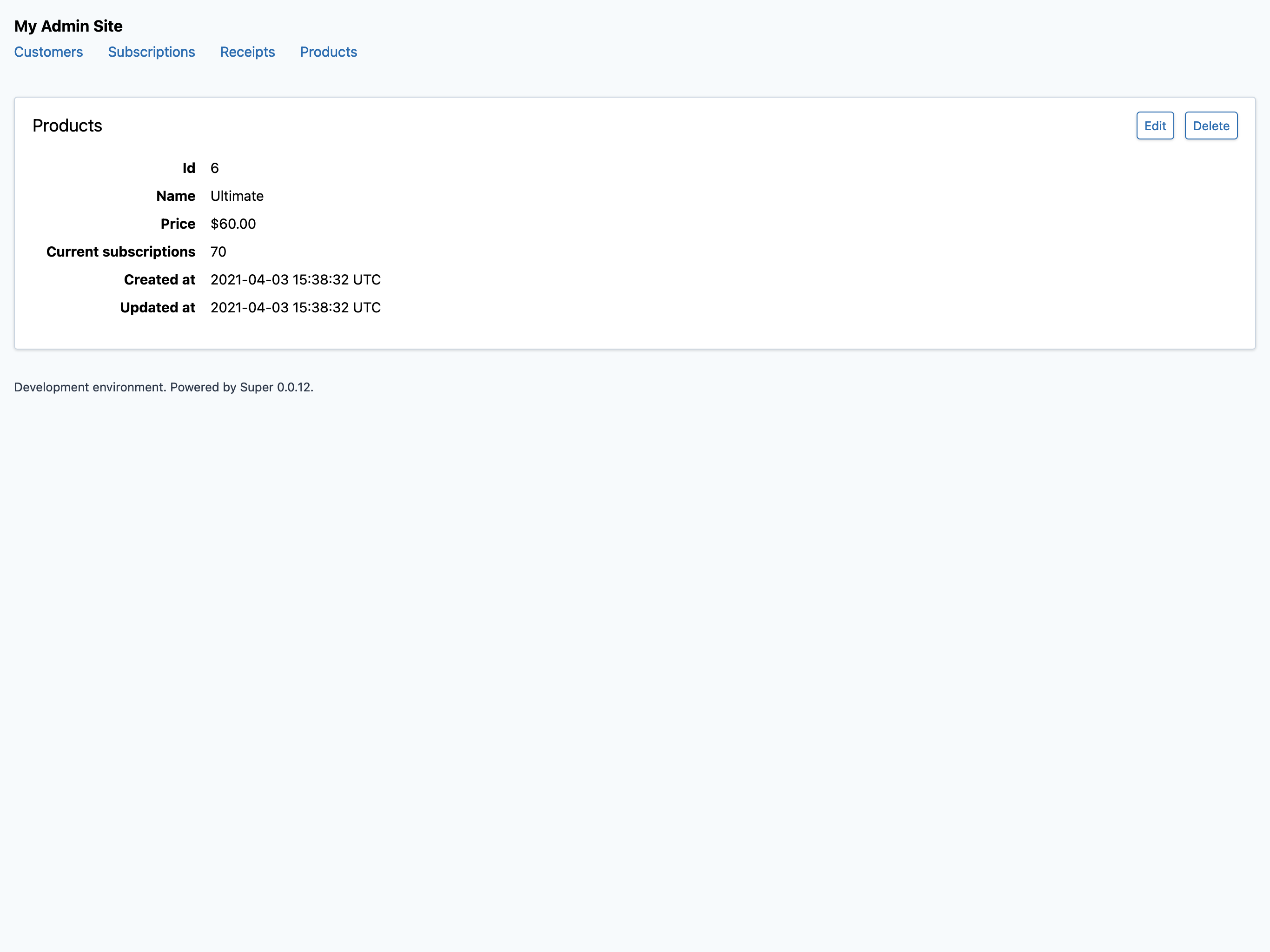
Receipts
Let’s format the prices here too, but for good measure, we’ll do it a little more manually without editing the model. We’ll also add a link to the associated subscription.
Note the type.real here. It’s works identically to type.computed except that it tells Super that it is a real database column.
# app/controllers/admin/receipts_controller.rb
class Admin::ReceiptsController < AdminController
class Controls < AdminControls
def model
Receipt
end
def display_schema(action:)
Super::Display.new do |f, type|
f[:id] = type.string
f[:total] = type.computed(:record) do |record|
Money.new(record.total_cents, record.total_currency).format
end
f[:subscription_id] = type.real(:column) do |value|
AdminController.helpers.link_to(
"Subscription ##{value}",
Rails.application.routes.url_helpers.admin_subscription_path(value)
)
end
f[:created_at] = type.timestamp
if action.show?
f[:updated_at] = type.timestamp
end
end
end
end
end
The index view:

The show view:
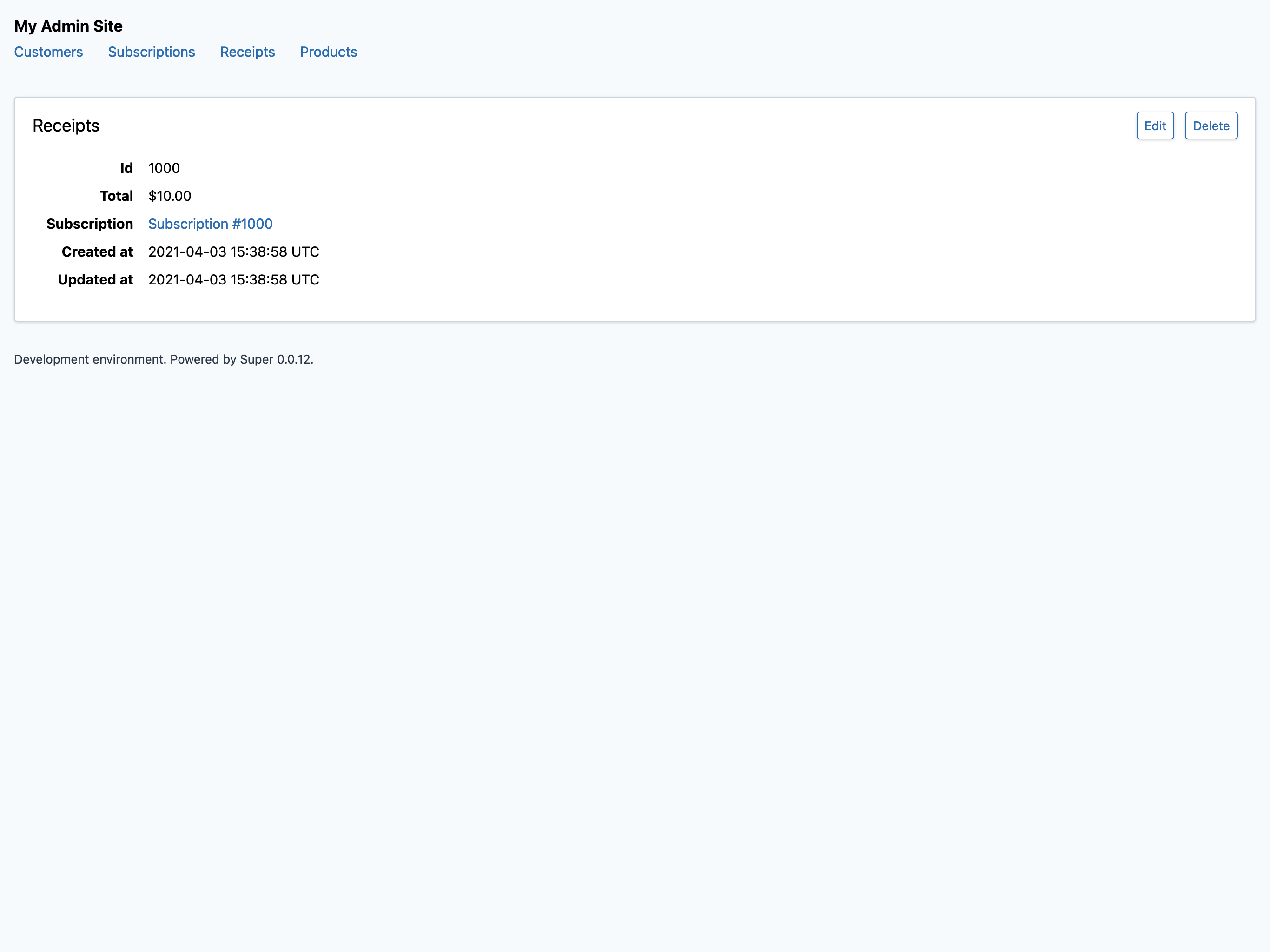
Subscriptions
We’ll do a little more here. In addition to showing the related Product and Customer, let’s show the if the subscription is currently active.
We’ll also update the forms and turn the product field into a dropdown. And while we’re at it, let’s use nested attributes so that we can edit or create a customer here.
# app/models/subscription.rb
class Subscription < ApplicationRecord
belongs_to :product
belongs_to :customer
accepts_nested_attributes_for :customer
validates_associated :customer
end
The interesting thing to note here is the nested attributes. Note that the f[:customer_attributes] is what’ll be set, while the type.has_one(:customer) is what’ll be read. Also of note, type.has_one and type.belongs_to are aliases.
# app/controllers/admin/subscriptions_controller.rb
class Admin::SubscriptionsController < AdminController
class Controls < Super::Controls
def model
Subscription
end
def scope(action:)
model.includes(:customer, :product)
end
def display_schema(action:)
current_time = Time.current
Super::Display.new do |f, type|
f[:id] = type.string
f[:customer_id] = type.real(:record) do |record|
customer = record.customer
AdminController.helpers.link_to(
customer.name,
Rails.application.routes.url_helpers.admin_customer_path(customer.id)
)
end
f[:product_id] = type.real(:record) do |record|
product = record.product
AdminController.helpers.link_to(
product.name,
Rails.application.routes.url_helpers.admin_product_path(product.id)
)
end
f[:status] = type.computed(:record) do |record|
if record.starts_at.nil? || record.ends_at.nil?
"Unknown"
elsif record.starts_at <= current_time && record.ends_at >= current_time
"Active"
elsif action.show?
"Inactive"
end
end
if action.index?
f[:created_at] = type.timestamp
else
f[:starts_at] = type.timestamp
f[:ends_at] = type.timestamp
f[:created_at] = type.timestamp
f[:updated_at] = type.timestamp
end
end
end
def form_schema(action:)
Super::Form.new do |f, type|
f[:customer_attributes] = type.has_one(:customer) do
f[:name] = type.string
end
f[:product_id] = type.select(collection: Product.all.map { |product| [product.name, product.id] })
f[:starts_at] = type.string
f[:ends_at] = type.string
end
end
end
end
The index view:
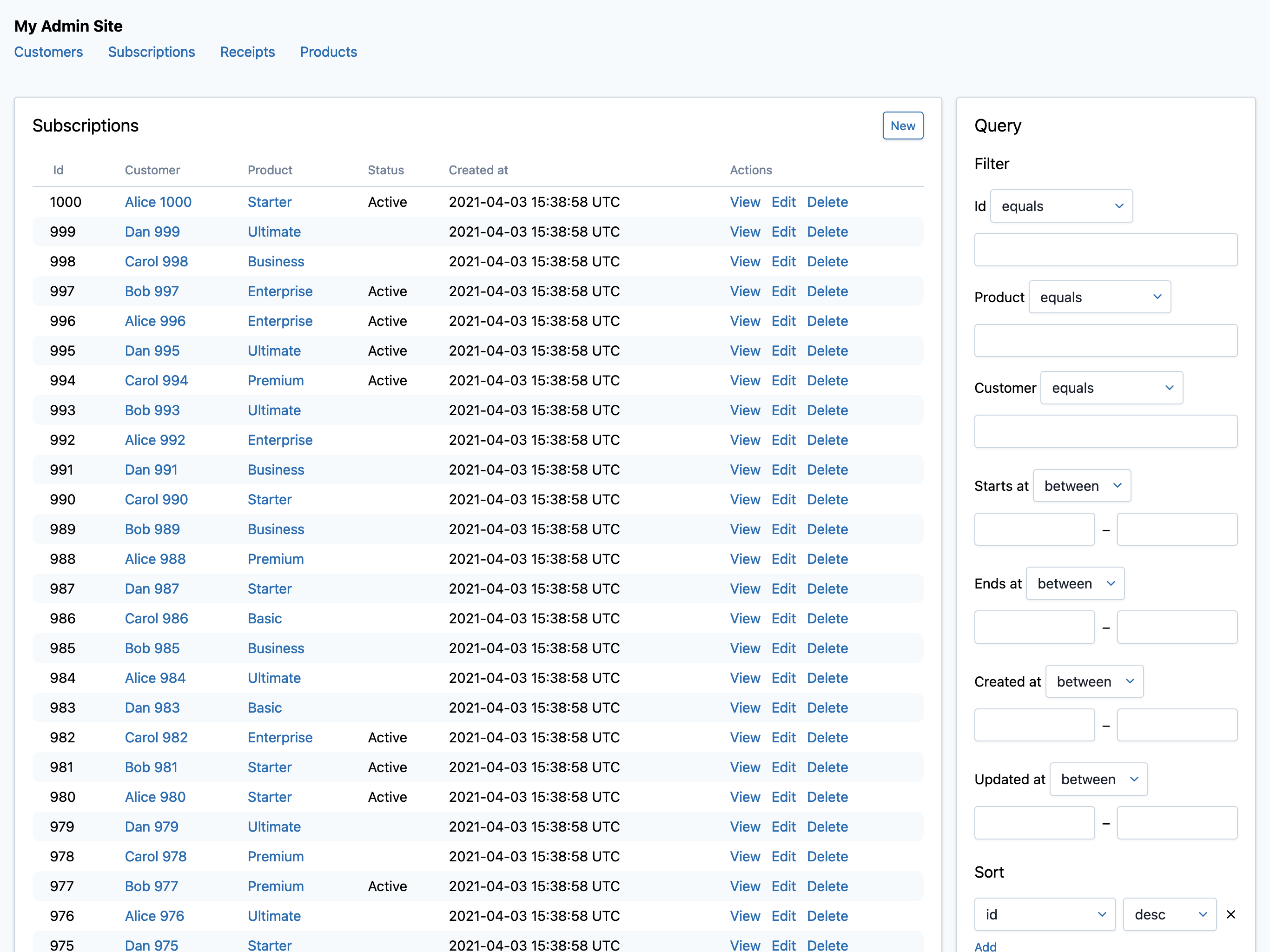
The show view:
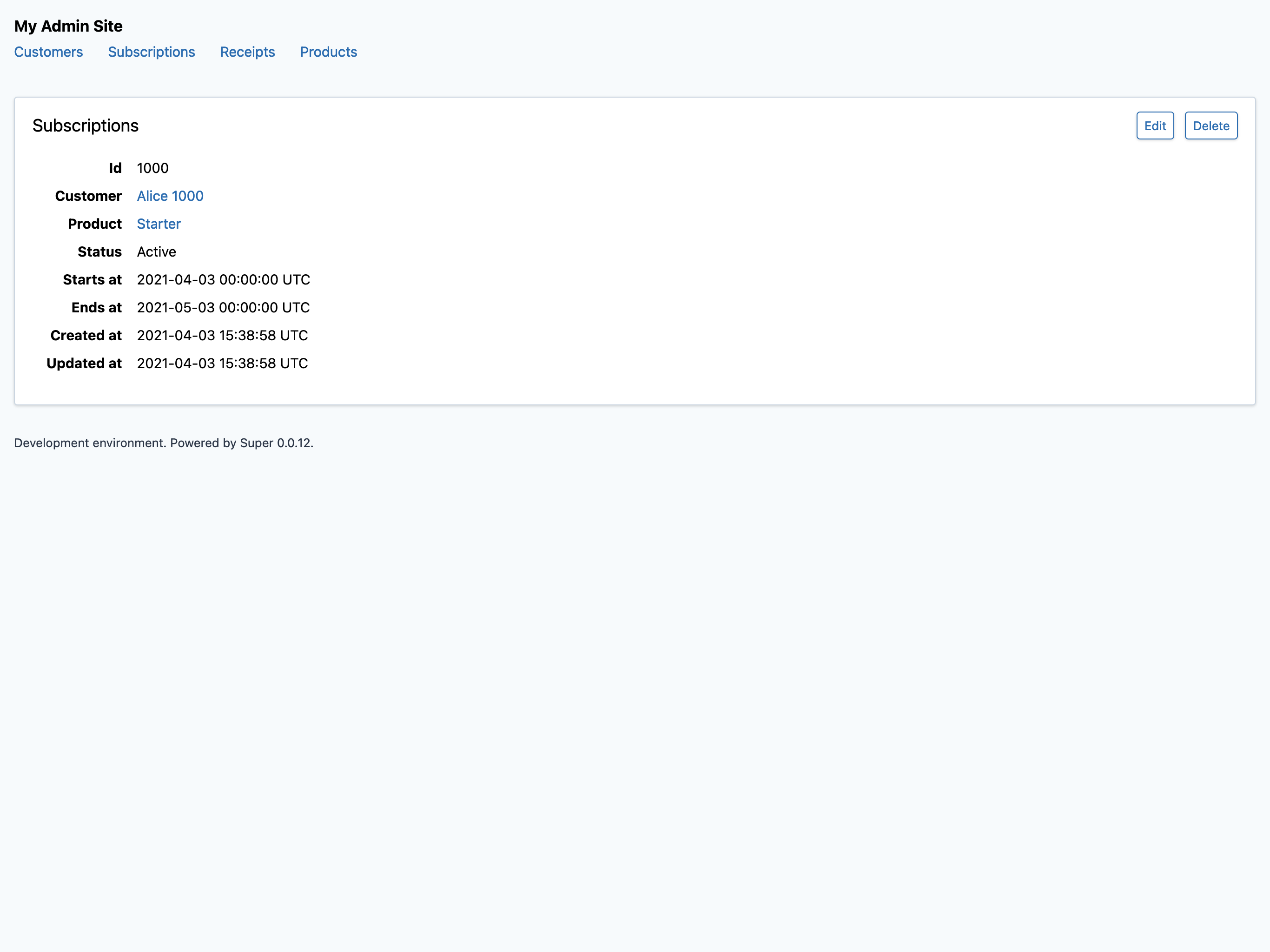
The edit view:
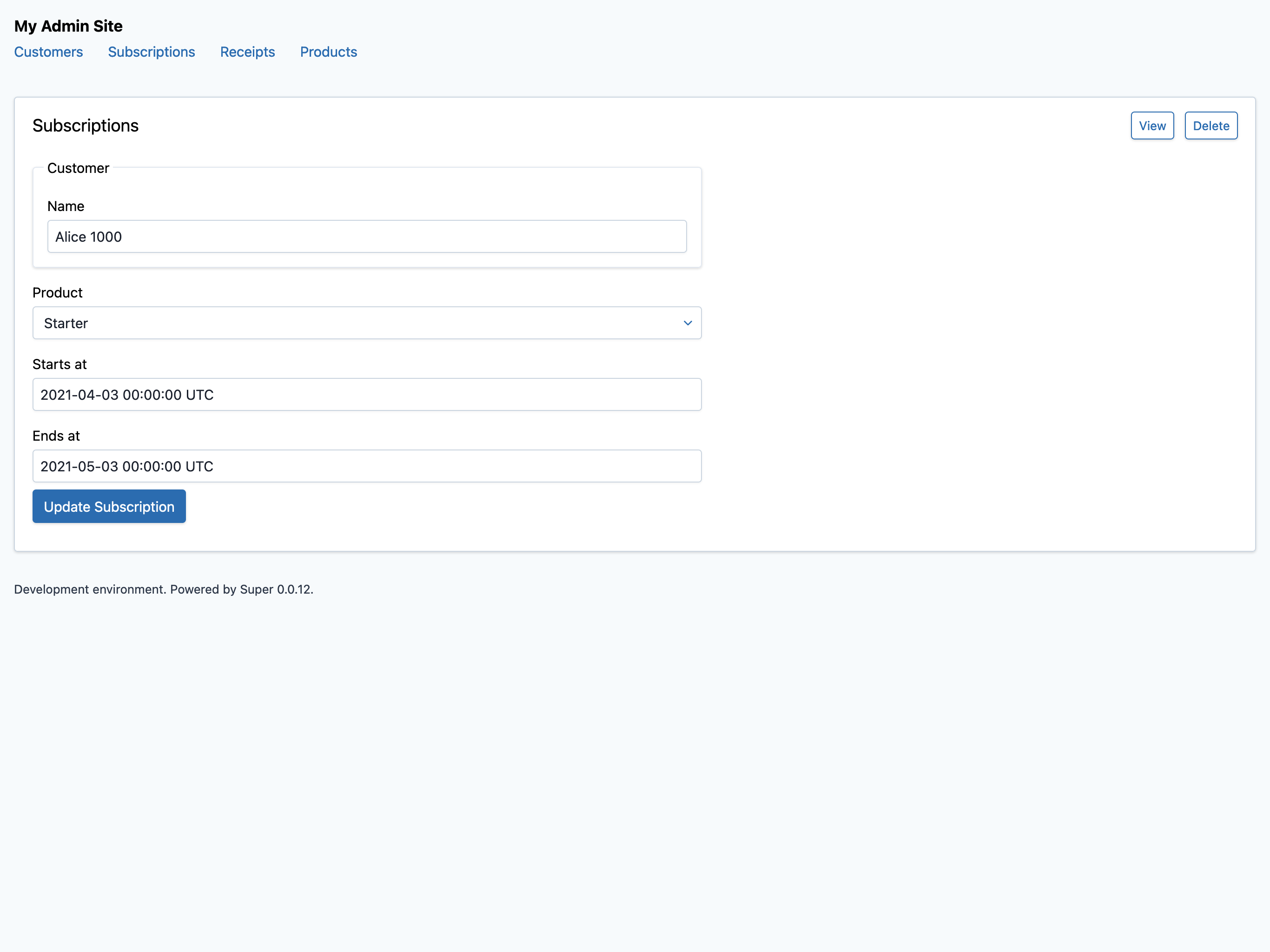
The new view (with a validation error):
